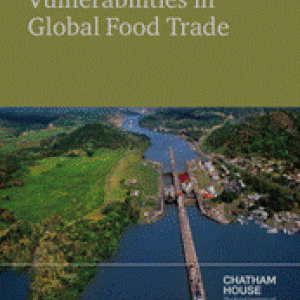
International trade in critical commodities is growing, which, this report poses, is increasing pressure on a small number of ‘chokepoints’ – critical junctures on transport routes through which exceptional volumes of trade pass. Were a serious interruption at one or more of these chokepoints to occur, this could potentially lead to supply shortfalls and price spikes, both within and outside of the food system. Smaller disruptions might add to delays, spoilage and transport costs, constraining market responsiveness and contributing to higher prices and increased volatility.
The figure below shows maritime, coastal and inland chokepoints and major shipping routes:

The report analyses the global transport system and identifies countries and regions which are most at risk. It finds that chokepoint risks are on the rise but are poorly understood and poorly managed despite their importance to the availability and price of food. It makes the following recommendations:
1. Integrate chokepoint analysis into mainstream risk management and security planning
2. Invest in infrastructure to ensure future food security
3. Enhance confidence and predictability in global trade.
4. Develop emergency supply-sharing arrangements and smarter strategic storage
5. Build the evidence base around chokepoint risk.
To read the full report, see here.







Post a new comment »